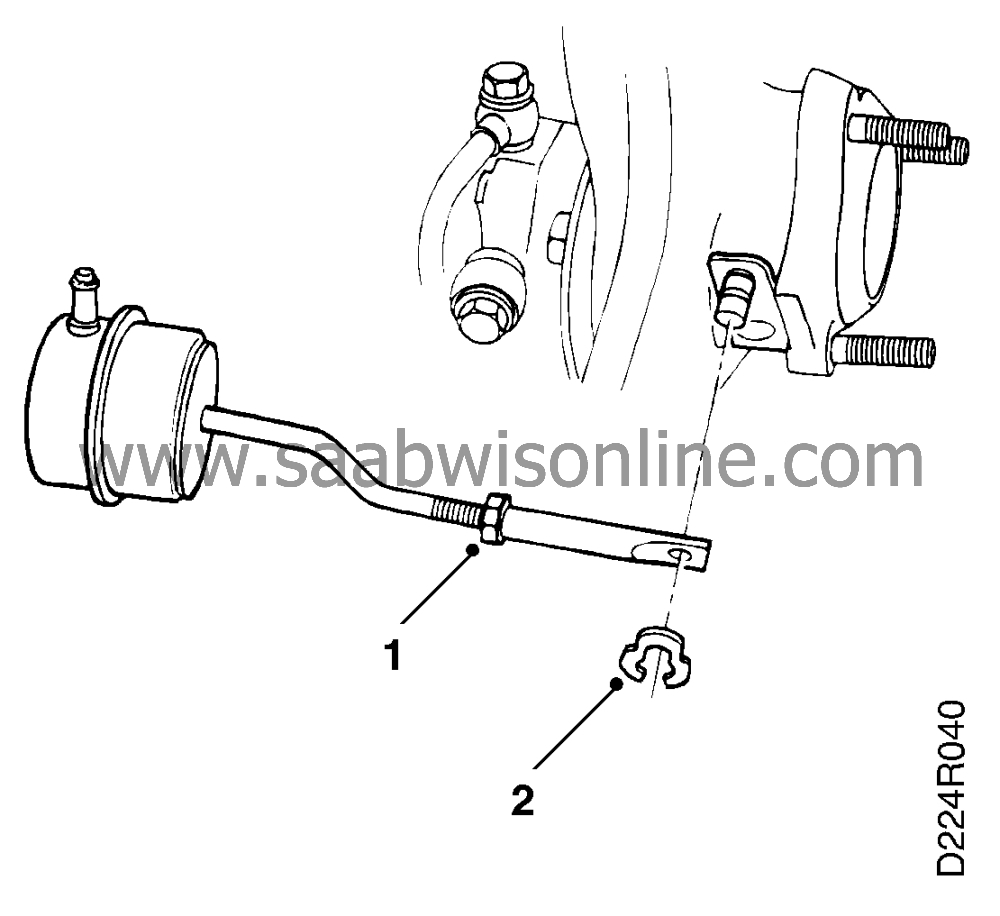Adjustment of basic charging pressure
|
|
Adjustment of basic charging pressure
|
|
Important
|
|
The basic charging pressure is the starting position for the Trionic system's
pressure regulating function and therefore has to be adjusted to the correct level.
|
|
The maximum boost pressure is continuously adapted to the relevant basic charging
pressure through the adaptive function.
|
|
Increasing the basic charging pressure above the stated value will not lead to a higher
boost pressure because the adaptive function adjusts the maximum boost pressure down to
the nominal value (negative adaptation).
|
|
It is important when adjusting the length of the pressure rod that the grips used as a
counterstay are placed as close to the thread as possible. Turn the end piece carefully so that
ridges do not appear on the rod.
|
|
|
|
1.
|
Undo the end piece's
locknut.
|
|
2.
|
Remove the locking ring and unhook the pressure rod from the operating arm of
the boost pressure regulator (it is easiest to carry the work in point 2 from
underneath).
|
|
3.
|
Adjust the basic charging pressure by screwing the end piece in if the
basic charging pressure is too low or screwing the end piece out if the basic charging
pressure is too high. Turning the end piece through one revolution results in a change in basic
charging pressure of approx. 0.02 bar.

|
Important
|
|
The boost pressure regulator must never have a "prestressing" of less than 2 mm (2
turns), even if the basic charging pressure can be adjusted so that it is within
0.40±0.03 bar.
|
|
|
|
|
4.
|
Connect the pressure rod to the operating arm and fit the locking
ring.

|
|
5.
|
Check the basic charging pressure on the road, see Service Manual "2:4
Exhaust system, cooling system, turbo system", "Checking of basic charging pressure (on the
road)
 . If the basic charging pressure cannot be adjusted, see Service Manual "2:4, "Control
valve, turbo pressure", and "Membane housing unit", for the diagnostic
procedure
. If the basic charging pressure cannot be adjusted, see Service Manual "2:4, "Control
valve, turbo pressure", and "Membane housing unit", for the diagnostic
procedure
 .
.
|
|
6.
|
Seal the pressure rod.
|

 . If the basic charging pressure cannot be adjusted, see Service Manual "2:4, "Control
valve, turbo pressure", and "Membane housing unit", for the diagnostic
procedure
. If the basic charging pressure cannot be adjusted, see Service Manual "2:4, "Control
valve, turbo pressure", and "Membane housing unit", for the diagnostic
procedure
 .
.




